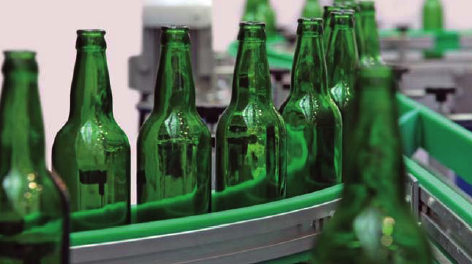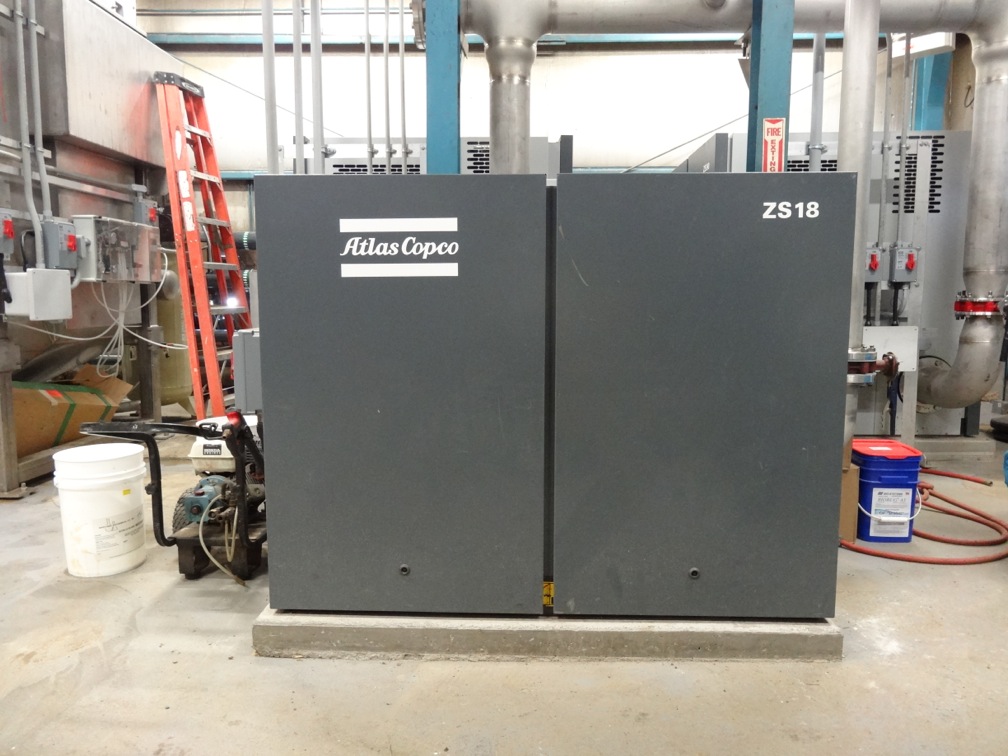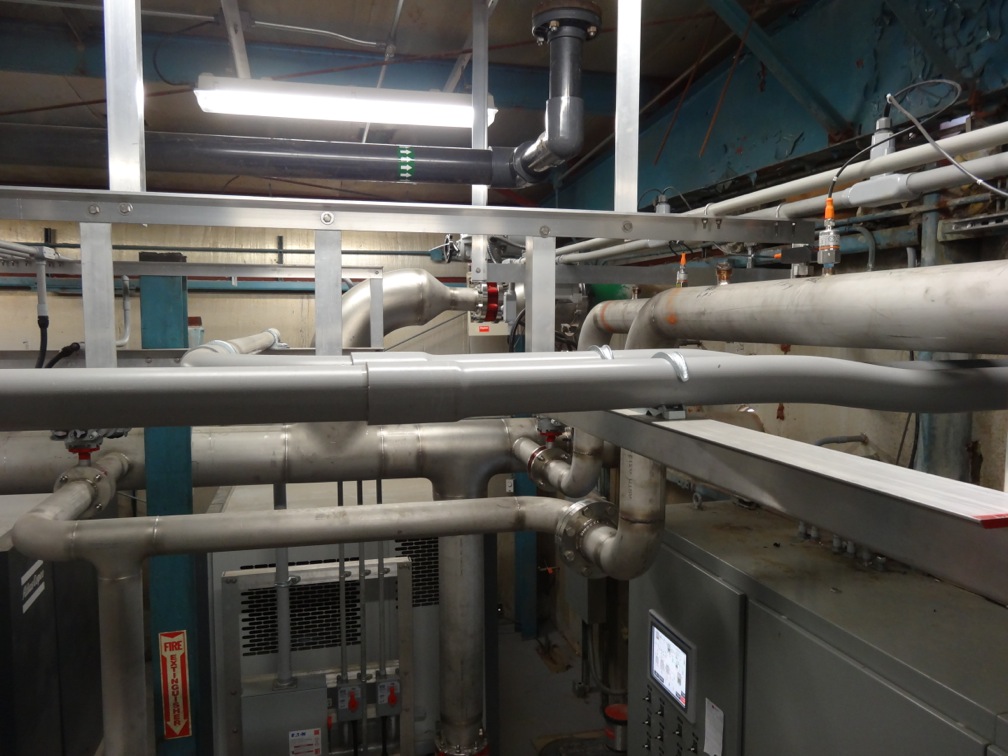The right ingredients and processes are essential for manufacturing flavorful beverages that contribute to the company’s bottom line. But what happens to all those other “ingredients” that aren’t part of the recipe? Cleaning up those unwanted ingredients from bottling plant wastewater can consume large amounts energy, time and money—and become a distraction from the company’s primary goal of manufacturing beverages.

Treating wastewater in an energy efficient and cost-effective manner is no longer a problem at the Cott Beverages bottling plant in Philadelphia, where A3-USA-- a leading company in the application of environmental technology--designed a Membrane Bioreactor (MBR)-Plate UF wastewater treatment system for the company’s bottling plant in Philadelphia, Pennsylvania.
MBR systems use low-pressure submerged membranes that combine an activated sludge process with membranes, with pores <0.1μm that are that are directly submerged in the sludge. The sludge is separated from the liquid as it passes through the membrane pores and remains in the biological reactor—along with bacteria, viruses and pathogens.
As it does in the other wastewater treatment plants it operates, A-3 USA ensures that the design and operation of the system is taken care of from design, selection of equipment, and smooth operation of the system. “We take care of everything including supports, railings and electrical—everything except the installation of equipment,” noted A-3 project manager Jens Sonntag, adding that they will also help oversee the work of contractors who install the compressors, aeration systems, blowers, membrane tanks and other equipment.

Compartmentalized Activated Sludge (CAS) Plant Compared to a Membrane BioReactor (MBR) Plant
The Right Amount of Low-Pressure 7-8 PSIG Air
Blower technology is a vital part of the wastewater treatment process, using the most efficient airflow pressure, between 7-8 psig, to keep the wastewater moving. Low-pressure 7 psig air also creates a cross pattern of air bubbles that clear the membrane from fine particle buildup, with pores as small as 0.1um that allow the membranes to remove those particles from the treated water.
“Each project is a little different—particularly a retrofit like this project,” Sonntag said. “In the case of this project we had limitations on space and total load, since the amount of power to the entire building was only 400 amps. So we really had to squeeze the equipment into that space and take those (electrical and other) limitations into consideration.”
One of the keys to that efficient design is calculating the right amount of air to use to clean the membrane with the cross pattern of bubbles. Because the bacteria need oxygen, large amounts of air are blown in the aeration tanks, as well as into the cleaning membrane in MBR systems like the one used at the bottling plant. Aeration devices are located at the bottom of membrane modules. Flow of air across the membranes creates a shear force that limits build-up on the membrane surface, and the membranes are also cleaned chemically on a periodic basis (every month or two months).
In the case of the Pennsylvania bottling plant, the calculations resulted in the installation of two large blowers of 125 hp each, and one smaller blower of 25hp for cleaning the membrane. The electrical limitations meant that only one of the larger blowers can be operated at a time, along with the smaller blower.
 |
|
The Atlas Copco ZS 18 is a 25 horsepower oil-free positive displacement rotary screw blower featuring a state of the art oil-free screw element, integrated gearbox and TEFC IP55 motor.
|
Calculating the right amount of air to use in the membrane tank is one of the keys to efficient, cost-effective operation. Using too much low-pressure air wastes energy, while too little air “is likely to corrupt the process,” according to Sonntag. Calculations must take into account the amount and density of the biomass, how much oxygen is needed to process the biomass, oxygen requirements replenishing oxygen demands for the biomass-eating “bugs,” and other factors such as excess capacity. The result of those calculations is the optimal requirement for blowers—in this case, the two larger blowers and one smaller unit.
There is a high demand for oxygen at manufacturing plants, and beverage plants have a 30:1 factor in terms of those needs. Compared to a municipal plant’s 0.05 MGD, a similarly sized system at a bottling plant requires 1.5 MGD. “Air is not nearly as important a cost item in a municipal plant as it is in a manufacturing plant,” Jens noted.
Blower Selection Criteria
In designing the Cott beverage plant, A-3 USA looked at several factors in selecting both compressors and blowers. They wanted blowers and compressors that would give the lowest cost over the life cycle, rather than simply choosing the equipment with the lowest upfront cost. Reliability and energy savings weighed heavily into their decision.
For the Cott Beverage project, A-3 USA chose blowers from Atlas Copco for several reasons, including reliability and energy efficiency. The “screw technology” blowers from Atlas Copco set this beverage plant apart in terms of efficiency, saving around 30 percent of the compressed air compared to conventional lobe compressors. In addition, the Atlas Copco screw technology blowers provide increased reliability, using an integrated gearbox and oil-free system, all integrated into a “plug-and-run” solution.
The big issues for most clients who operate wastewater treatment plants are “noise, reliability and cost effectiveness,” noted John Conover, Product Manager, Atlas Copco Compressors LLC. “Our blowers provide wide operating efficiency across our whole range of blowers.”
Conover said that “most of the time, blowers at wastewater treatment plants are not running at full capacity. They are usually running at around 30 percent of capacity. Screw technology blowers do much better at maintaining energy efficiency both at maximum bio-loading, and when they are turned down to meet more normal loading demands, there is no sacrifice in efficiency at either the high end or the low end of those demands.”
Bottling plants aren’t the only type of manufacturing operation that can benefit from the energy savings, reduced noise, and increased reliability that Atlas Copco screw technology blowers provide. Many industries use air blowers for their processes and, according to the United States Environmental Protection Agency, those blowers “typically represent up to 70 percent of the total electricity costs.” In both manufacturing and municipal wastewater treatment plants, millions of bacteria feed on organic waste, breaking it up into carbon dioxide, nitrogen gas and water.
A Dissolved Floatation System (DFS) must often be added to the process to eliminate oil and grease in treating wastewater from manufacturing plants.

This custom piping solution delivers 7-8 psig air to four biological treatment processes.
Screw Blower Technology from Atlas Copco
New technology from Atlas Copco sets the Cott beverage plant apart in terms of efficiency. The innovative screw technology reduces compressor energy cost by an average of 30 percent over conventional lobe compressors, and was delivered to the site in a “ready-to-run package. “
Conover noted that the lifecycle cost of operating the Atlas Copco blowers played a big part in the decision by A-3 USA to use Atlas Copco blowers and other equipment on this project. “It’s not just the upfront cost,” he said, “but how much it is going to cost for oil, energy and labor—and the intangibles, like whether a trained technician will always be available less than an hour away. All of these factors, including those intangibles, have to be included in the (decision-making) spreadsheet. “ Conover’s final comment was, “The good news for our customers is that we do all of these things very well.”
Membrane Bioreactor (MBR) Benefits
MBR systems are used in a large variety of applications and benefit in a number of ways of conventional systems, including:
- Operation at higher MLSS (Mixed Liquid Suspended Solids) more robust process
- Compact foot print that works well in tight spaces like the one at the Philadelphia bottling plant
- Lower waste sludge production and less dewatering
- Fully automated operation for easier operation and less operator attention
- Easy upgrade and expansion by adding membrane modules
- Sludge generated from the process requires less dewatering
- Disinfection is reduced or eliminated
- Provides consistent, superior effluent quality independent of flow variations (heavy rain), floating sludge, etc.
- Effluent is recyclable, subject to state and local water quality requirements—a big plus particularly in areas where water resources are scarce.
At the Cott beverage plant in Philadelphia, environmental solutions provider A3-USA is taking on a challenge that most manufacturers would rather leave to someone else: ensuring that the ingredients they don’t want in their products are cleaned from wastewater in an energy-efficient and cost-effective manner.

For more information visit www.atlascopco.com or www.a3-usa.com
To read more Wastewater Industry articles visit www.airbestpractices.com/industries/wastewater




